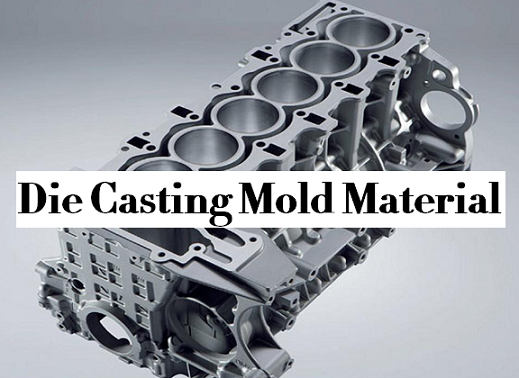Stahl Specialty Company - The Facts
Stahl Specialty Company - The Facts
Blog Article
The 7-Second Trick For Stahl Specialty Company
Table of ContentsThe Greatest Guide To Stahl Specialty CompanyStahl Specialty Company Can Be Fun For AnyoneOur Stahl Specialty Company DiariesStahl Specialty Company Things To Know Before You BuyThe Buzz on Stahl Specialty Company
The refined distinction hinges on the chemical content. Chemical Contrast of Cast Aluminum Alloys Silicon advertises castability by lowering the alloy's melting temperature level and improving fluidness throughout spreading. It plays a vital duty in allowing detailed molds to be filled up precisely. In addition, silicon adds to the alloy's stamina and use resistance, making it useful in applications where durability is critical, such as auto parts and engine elements.It additionally enhances the machinability of the alloy, making it less complicated to refine right into completed products. In this means, iron adds to the general workability of light weight aluminum alloys. Copper increases electric conductivity, making it advantageous in electrical applications. It additionally enhances rust resistance and includes in the alloy's total strength.
Manganese contributes to the strength of light weight aluminum alloys and boosts workability. Magnesium is a light-weight aspect that offers toughness and influence resistance to light weight aluminum alloys.
Zinc improves the castability of aluminum alloys and helps manage the solidification process during casting. It improves the alloy's strength and firmness.
The 9-Second Trick For Stahl Specialty Company
Due to the fact that aluminum-silicon alloys have great casting properties, high gas residential properties, simple processes, and superb deterioration resistance, aluminum-silicon alloys are most typically used in the die-casting industry in the house and abroad. At the same time, aluminum-silicon alloys are also relatively early and widely identified alloys created and made use of in die-casting. After constant research study and enhancement, a lot of the present international mainstream aluminum-silicon alloys have actually been finalized and are nothing greater than A356, A360, A380, ADC12, B390, and A413.
The key thermal conductivity, tensile strength, return strength, and prolongation differ. Among the above alloys, A356 has the highest possible thermal conductivity, and A380 and ADC12 have the least expensive.

8 Simple Techniques For Stahl Specialty Company
In accuracy casting, 6063 is fit for applications where intricate geometries and premium surface coatings are paramount. Instances consist of telecommunication units, where the alloy's exceptional formability enables streamlined and visually pleasing designs while preserving structural stability. Likewise, in the Illumination Solutions sector, precision-cast 6063 parts create sophisticated and effective lights fixtures that call for detailed forms and good thermal performance.
(https://lnk.pblc.app/pub/4920c349338804)
The A360 shows exceptional prolongation, making it ideal for facility and thin-walled parts. In accuracy casting applications, A360 is fit for markets such as Consumer Electronic Devices, Telecommunication, and Power Devices.

In accuracy spreading, light weight aluminum 413 radiates in the Customer Electronic Devices and Power Tools markets. This alloy's remarkable corrosion resistance makes it a superb option for outdoor applications, ensuring resilient, sturdy items in the stated industries.
The Only Guide to Stahl Specialty Company
When you have decided that the light weight aluminum die casting process is suitable for your task, an important next step is determining on the most ideal alloy. The aluminum alloy you select will significantly affect both the spreading process and the residential or commercial properties of the end product. Due to this, you should make your decision carefully and take an educated technique.
Figuring out the most suitable aluminum alloy for your application will certainly suggest weighing a wide selection of characteristics. These comparative alloy characteristics adhere to the North American Die Casting Association's guidelines, and we've divided them into 2 classifications. Foundry. The initial classification addresses alloy characteristics that affect the manufacturing procedure. The 2nd covers features impacting the buildings of the end product.
The alloy you choose for die spreading straight influences several facets of the casting process, like how easy the alloy is to work with and if it is vulnerable to casting defects. Hot splitting, likewise understood as solidification cracking, is a regular die casting flaw for aluminum alloys that can result in interior or surface-level rips or splits.
The Of Stahl Specialty Company
Certain light continue reading this weight aluminum alloys are more vulnerable to warm fracturing than others, and your choice should consider this. Another common flaw discovered in the die casting of aluminum is pass away soldering, which is when the actors adheres to the die wall surfaces and makes ejection hard. It can harm both the actors and the die, so you need to seek alloys with high anti-soldering homes.
Deterioration resistance, which is already a noteworthy attribute of light weight aluminum, can differ significantly from alloy to alloy and is a necessary characteristic to think about relying on the ecological problems your product will certainly be revealed to. Use resistance is an additional residential property commonly looked for in aluminum items and can separate some alloys.
Report this page